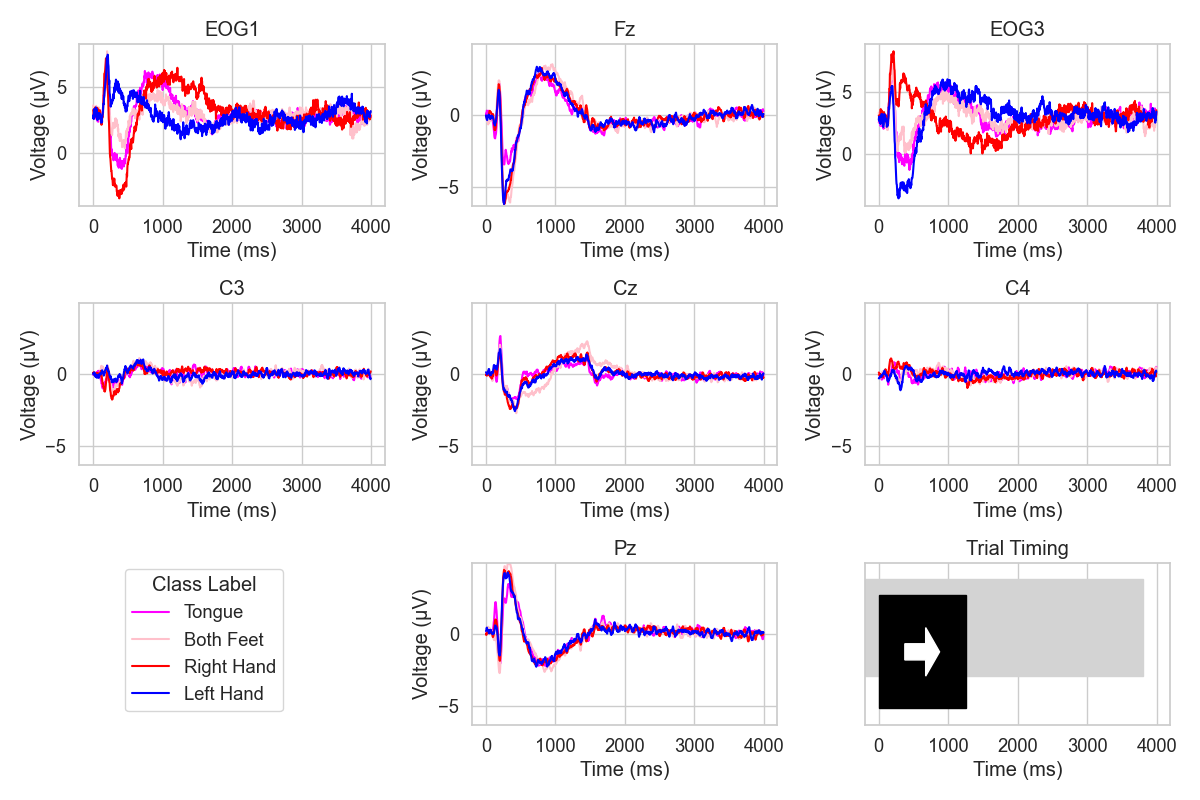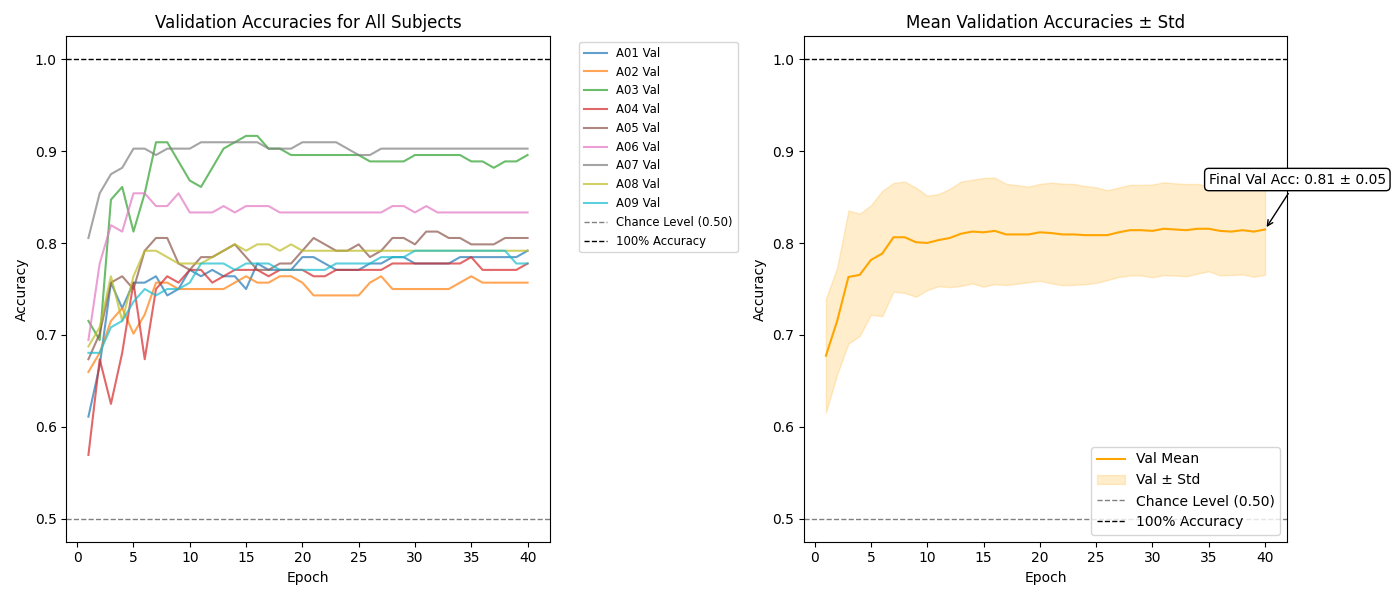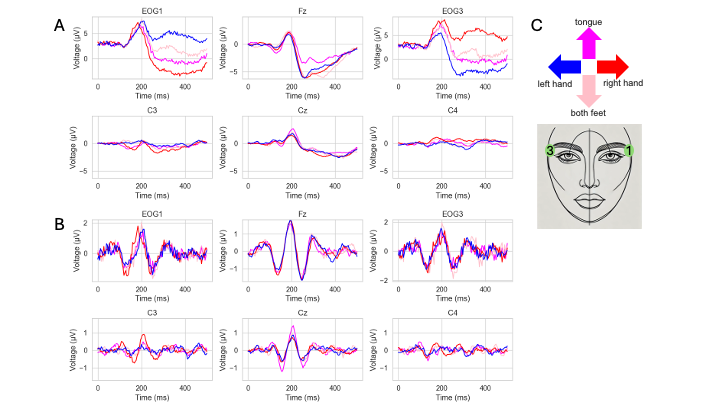- The paper demonstrates the effectiveness of human-AI teaming using LLMs through ChatBCI to enhance EEG-based motor imagery decoding in BCI research.
- It employs Python and Janusian Design Principles to create a transparent, adaptive workspace that fosters efficient collaboration between humans and AI.
- The study integrates exploratory data analysis with an LLM-generated CNN decoder, showcasing scalable methodologies for advancing neuroscience.
Human-AI Teaming Using LLMs: Boosting Brain-Computer Interfacing (BCI) and Brain Research
Introduction to Human-AI Teaming in BCI Research
The paper "Human-AI Teaming Using LLMs: Boosting Brain-Computer Interfacing (BCI) and Brain Research" explores the application of AI, particularly LLMs, in advancing the field of Brain-Computer Interfaces (BCIs) and neuroscience. The authors propose that human-AI collaboration presents a promising approach, contrasting fully autonomous AI research systems. The paper introduces ChatBCI, a Python-based toolbox designed to facilitate collaboration between humans and AI in BCI research, leveraging LLMs to improve motor imagery decoding from EEG signals.

Figure 1: ERP waveforms across all trials showcasing cue presentation times and class-specific dynamics.
ChatBCI is implemented in Python, utilizing GPT-4o as its LLM, and includes components such as EEG datasets, preprocessing tools, and machine learning model implementations. It emphasizes human-AI collaboration, fostering the development of a shared workspace through principles aimed at reducing communication gaps and encouraging efficient knowledge transfer.
Janusian Design Principles
ChatBCI is built upon Janusian Design Principles that focus on fostering a joint collaboration language, ensuring transparency, developing a shared knowledge base, and integrating adaptive autonomy. These principles aim to create an environment conducive to human-AI co-learning:
Application of ChatBCI to BCI Projects
Exploratory Data Analysis
Within ChatBCI, the analysis of EEG datasets such as the BCI Competition IV 2a revealed various insights into cue-evoked, motor-related, and ocular artifacts. The toolbox facilitated robust statistical examination and visualization, enabling efficient interpretation and validation of the underlying neural dynamics.
The examination process identified class-specific ERP components and their overlap with expected neural signals, demonstrating ChatBCI's capacity to rapidly process and explore complex datasets. These insights were instrumental in setting the foundation for subsequent neural network model development.
LLM-Generated CNN Decoder
Using ChatBCI, the authors implemented a convolutional neural network specifically for EEG decoding with iterative human-AI interaction. The network was designed for simplicity and interpretability, showing promising decoding results and confirming its usefulness in identifying genuine neural signals from potential artifacts.

Figure 3: Deep learning architecture used for EEG decoding highlighting CNN layers and activation functions.
Discussion on Implications and Future Directions
ChatBCI exemplifies the potential of human-AI teaming in neuroscience, providing a structured framework for tackling domain-specific challenges in BCI development. The paper highlights the role of AI in augmenting human expertise, offering scalable solutions applicable to broader neurotechnological challenges.
The integration of AI into BCI workflows not only accelerates research processes but also holds promise for enhanced teaching and training in the field. The adaptable architecture of ChatBCI demonstrates the feasibility of expanding to other scientific domains, advancing AI systems towards holistic brain understanding.
Conclusion
The paper presents ChatBCI as a tool based on Janusian Design Principles, fostering effective human-AI collaboration in BCI research. By leveraging LLMs, ChatBCI significantly enhances research capabilities, providing robust methodologies for EEG signal analysis and interpretation. This approach underscores the importance of human-AI teaming in unlocking new research potentials and advancing scientific discovery in brain research.
The findings suggest a future where AI systems achieve deeper understanding of human brain dynamics, leading to intelligent collaboration frameworks that revolutionize neuroscience and related fields. As AI continues to evolve alongside human counterparts, the synergy presents immense opportunities to refine and extend the boundaries of scientific inquiry.


